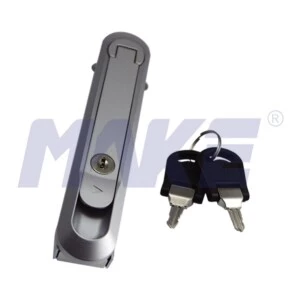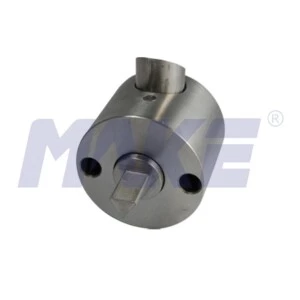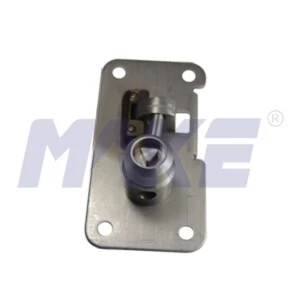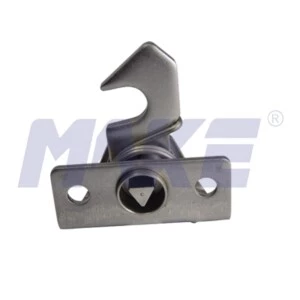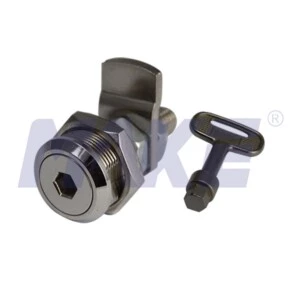A cabinet lock is mounted on a cabinet door and operated by controlling the lock latch coupling. Different material options are available to suit your security needs.
Make Locks is a professional cabinet lock manufacturer offering superior OEM/ODM services. Our cabinet locks are available in various shapes and sizes, with inset or offset cams/tongues, and we can fulfill customized orders to meet specific requirements.
Cabinet locks are suitable for enclosures, electrical panels, cabinets, machinery covers, street furniture, and other applications where frequent access is required. They also offer the added convenience of slam-shut action or coin-operated access as an alternative to keys. Operating the latch is simple and user-friendly.
1-6 of 20 results
Cabinet locks are specialized locking devices designed to secure cupboards, drawers, and enclosures, ensuring that their contents remain protected against unauthorized access. Found in homes, offices, industrial environments, and commercial facilities, these locks are used to store personal belongings, sensitive documents, or valuable equipment. By securing cabinet doors or drawers, they play a vital role in maintaining both security and organization.
Often referred to as cam locks due to their cylindrical form, cabinet locks fit into pre-cut holes or panels and operate with a simple turning mechanism. When the correct key is inserted, the lock’s tongue (also called the cam or latch) rotates to either secure or release the door. Their compact design, versatility, and ease of installation make them a preferred solution for both replacements and new installations. Beyond simple household cupboards, cabinet locks are widely used in industrial cabinets, power distribution boxes, electrical panels, machinery covers, and even street furniture enclosures. For these reasons, they are sometimes also called connecting rod locks.
As everyday security devices, cabinet locks have evolved to meet various levels of protection requirements, ranging from basic mechanical cam locks to advanced electronic models featuring digital or biometric authentication.
Cabinets play an essential role in organizing and safeguarding items. Whether storing sensitive documents at work, personal valuables at home, or hazardous materials in a laboratory, having a secure locking system ensures that these items remain protected and accessible only to authorized individuals. Without proper locks, cabinets could become vulnerable points of intrusion, leading to theft, data breaches, safety hazards, or loss of privacy.
MAKE, a professional cabinet lock manufacturer, highlights the importance of choosing strong and durable cabinet locks designed to meet diverse needs. By providing a wide range of lock types and offering both OEM and ODM services, MAKE helps customers across industries ensure their storage systems remain secure.
Cabinet locks are typically installed directly into the front panel of a cabinet or drawer. The visible part of the lock remains flush with the surface for a neat, professional appearance.
Operation is straightforward:
Key Insertion – A key is inserted into the cylinder of the lock.
Turning Mechanism – When the key is turned, the cam or tongue bar inside the lock rotates.
Locking Position – If the cam drops sideways or aligns horizontally, it engages with the cabinet frame or strike plate, securing the door.
Unlocking Position – When rotated vertically, the cam releases its hold, allowing the cabinet door or drawer to open freely.
This simple yet effective mechanism makes cabinet locks highly reliable and user-friendly. Some advanced versions use electronic controls instead of traditional keys, allowing access through keypads, RFID cards, or biometric scanners.
The primary purpose of cabinet locks is to prevent unauthorized access. Whether protecting valuable tools in a workshop, confidential client files in an office, or expensive electronics in a facility, cabinet locks deter theft and misuse. For businesses, this adds an extra layer of protection against insider risks as well.
In many environments, cabinets store potentially hazardous materials such as chemicals, sharp instruments, or electrical equipment. Locks ensure these dangerous items are not easily accessible, reducing the risk of accidents, especially in laboratories, hospitals, or schools.
Cabinet locks help maintain confidentiality. Employees in offices often store personal items, sensitive data, or private files in locked cabinets, ensuring only those with the right key or code can gain access. This is particularly critical in industries dealing with intellectual property or client records.
In shared spaces such as gyms, dormitories, or coworking offices, cabinet locks support structured organization. Assigning individual locks allows users to store belongings without confusion, ensuring order and accountability.
Cabinet locks are available in multiple designs—cam locks, sliding door locks, rod-controlled locks, and electronic systems—making them adaptable to virtually any cabinet type and level of required security.
Selecting the most suitable cabinet lock depends on several key considerations:
Hinged doors may require simple cam locks.
Sliding cabinets need specially designed sliding locks.
Multi-door cabinets may benefit from rod-controlled locks that secure multiple points simultaneously.
For high-value or sensitive storage, consider cylinder cam locks, multi-point locking systems, or electronic locks with advanced authentication such as biometrics or RFID cards.
For general storage, standard cam locks or combination locks are usually sufficient.
Locks should be intuitive. Overly complex mechanisms may discourage regular use, leaving cabinets unlocked and defeating the purpose of installation.
Some locks require drilling or panel modifications. Before purchasing, assess whether your cabinet can accommodate the required installation method.
While higher-end electronic locks provide advanced features, they also cost more. Choose a lock that balances budget with the level of protection required.
If retrofitting an existing cabinet, ensure the chosen lock is compatible with the cabinet’s structure and dimensions.
By carefully weighing these factors, businesses and homeowners can make informed decisions and ensure long-term reliability.
Cam Locks – The most widely used type, ideal for office furniture, lockers, and filing cabinets.
Sliding Door Locks – Designed for glass or wooden sliding cabinet doors.
Rod-Controlled Locks – Secure multiple doors with one locking mechanism.
Electronic Cabinet Locks – Operated with PIN codes, cards, or biometrics for advanced security.
Combination Locks – Keyless locks that use number dials for quick access.
Each type offers distinct features and should be chosen according to usage environment.
To ensure long-lasting performance, cabinet locks require basic but consistent maintenance. Here are some useful tips:
Regular Cleaning: Dust and debris can accumulate in lock cylinders, leading to jamming. Use compressed air or a small brush to keep the mechanism clean.
Lubrication: Apply a graphite-based lubricant periodically to maintain smooth key rotation. Avoid oil-based products, which may attract dirt.
Check for Wear: Inspect keys and cams for signs of wear or misalignment. Replace damaged parts promptly.
Test Functionality: Routinely test locks to ensure they engage and disengage properly.
Upgrade When Needed: If locks become outdated or compromised, upgrade to modern designs for improved security.
Proper maintenance not only extends the lifespan of cabinet locks but also ensures ongoing security for the stored items.
MAKE has established itself as a professional cabinet lock manufacturer offering high-quality products to meet diverse security needs. With superior OEM and ODM services, the company tailors solutions according to customer requirements, from small-scale household locks to industrial-grade systems.
Their wide range of cabinet locks includes designs in various materials, shapes, and finishes, ensuring compatibility with different cabinet types and environments. Whether customers need traditional cam locks, modern electronic solutions, or custom-built designs, MAKE’s expertise and strict quality standards guarantee durability and reliability.
Cabinet locks may appear small and simple, but they play a critical role in modern security and organization systems. From securing confidential documents in an office to protecting hazardous materials in a laboratory, these locks provide safety, privacy, and peace of mind.
By understanding how cabinet locks work, their benefits, and the different types available, individuals and businesses can make informed decisions that enhance both security and convenience. Regular maintenance ensures long-term performance, while choosing the right manufacturer, such as MAKE, ensures top-quality products tailored to specific needs.
In an age where protecting assets and information is more important than ever, investing in reliable cabinet locks is a small step with a significant impact.


